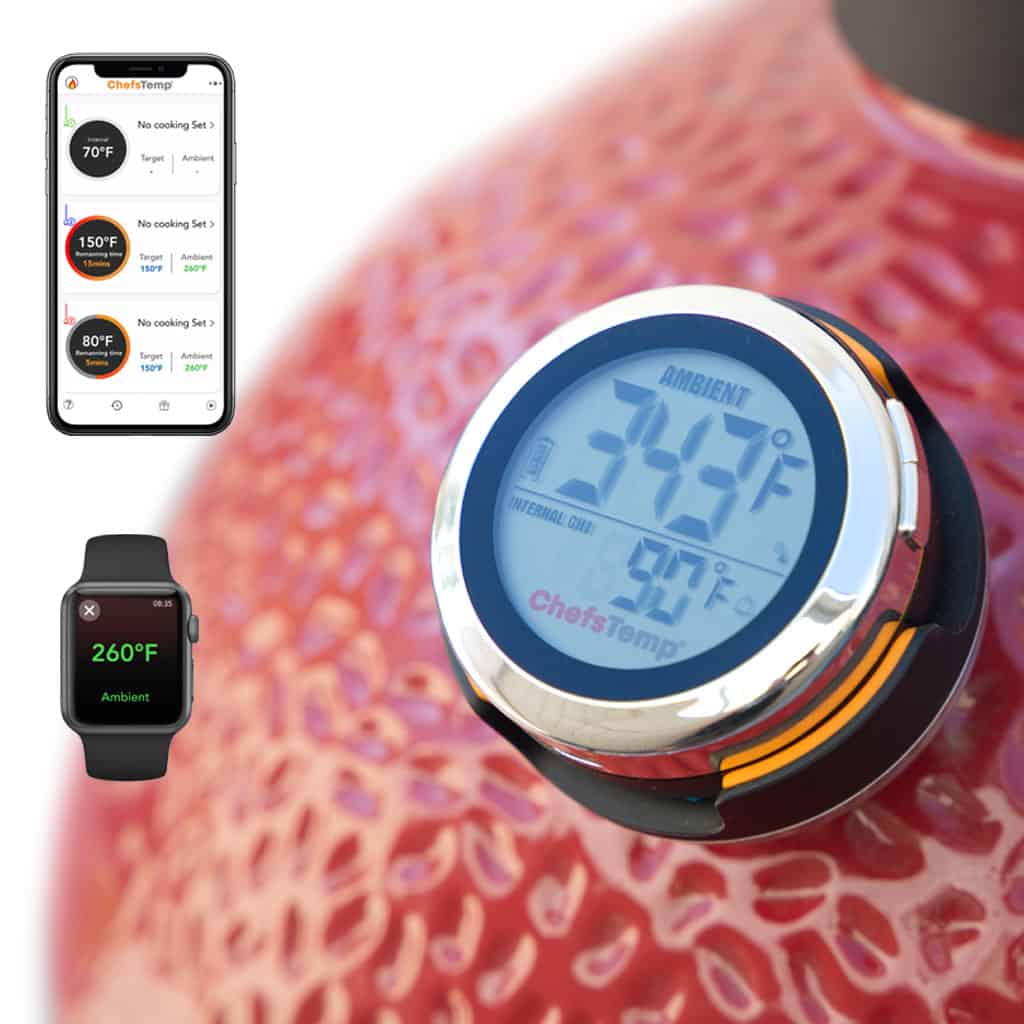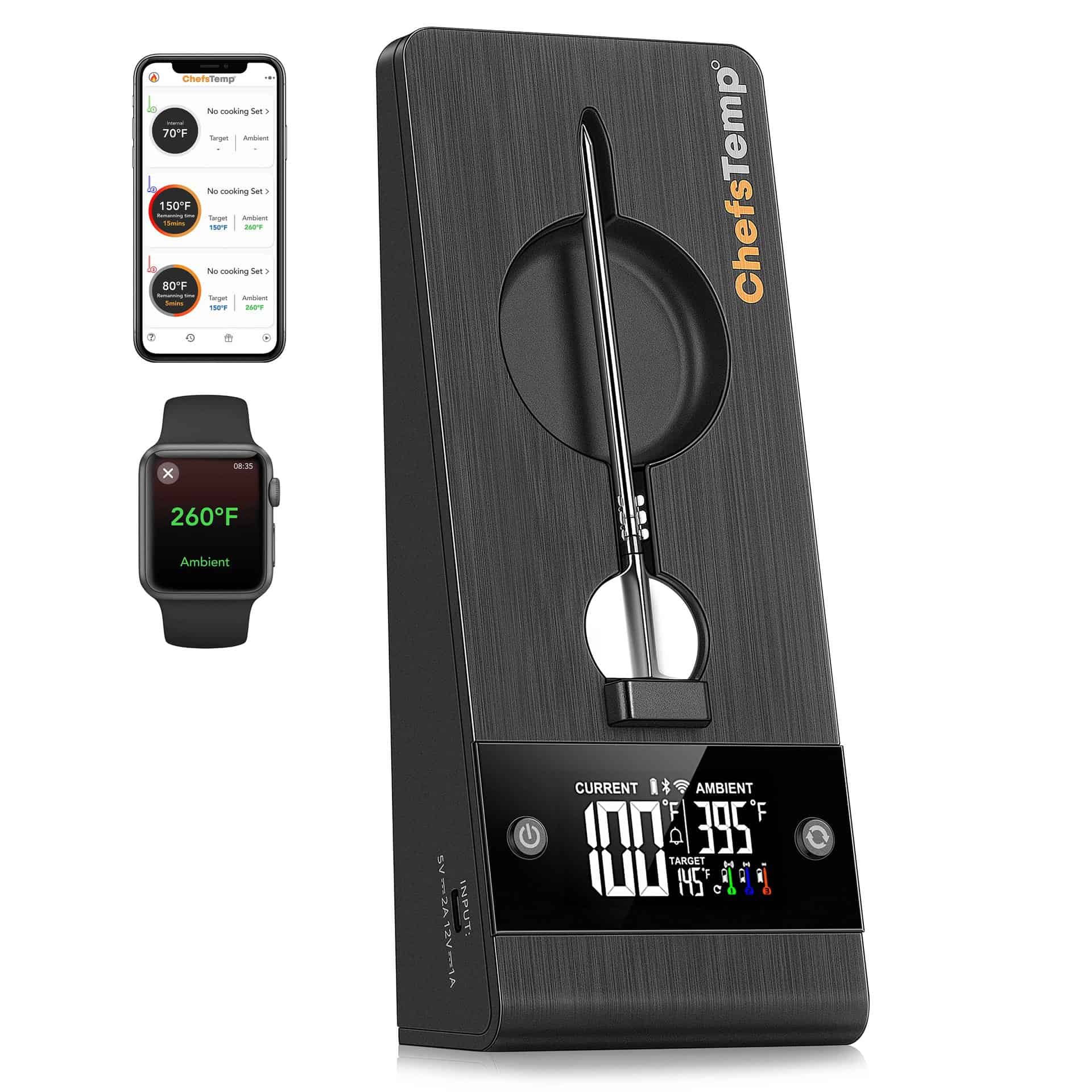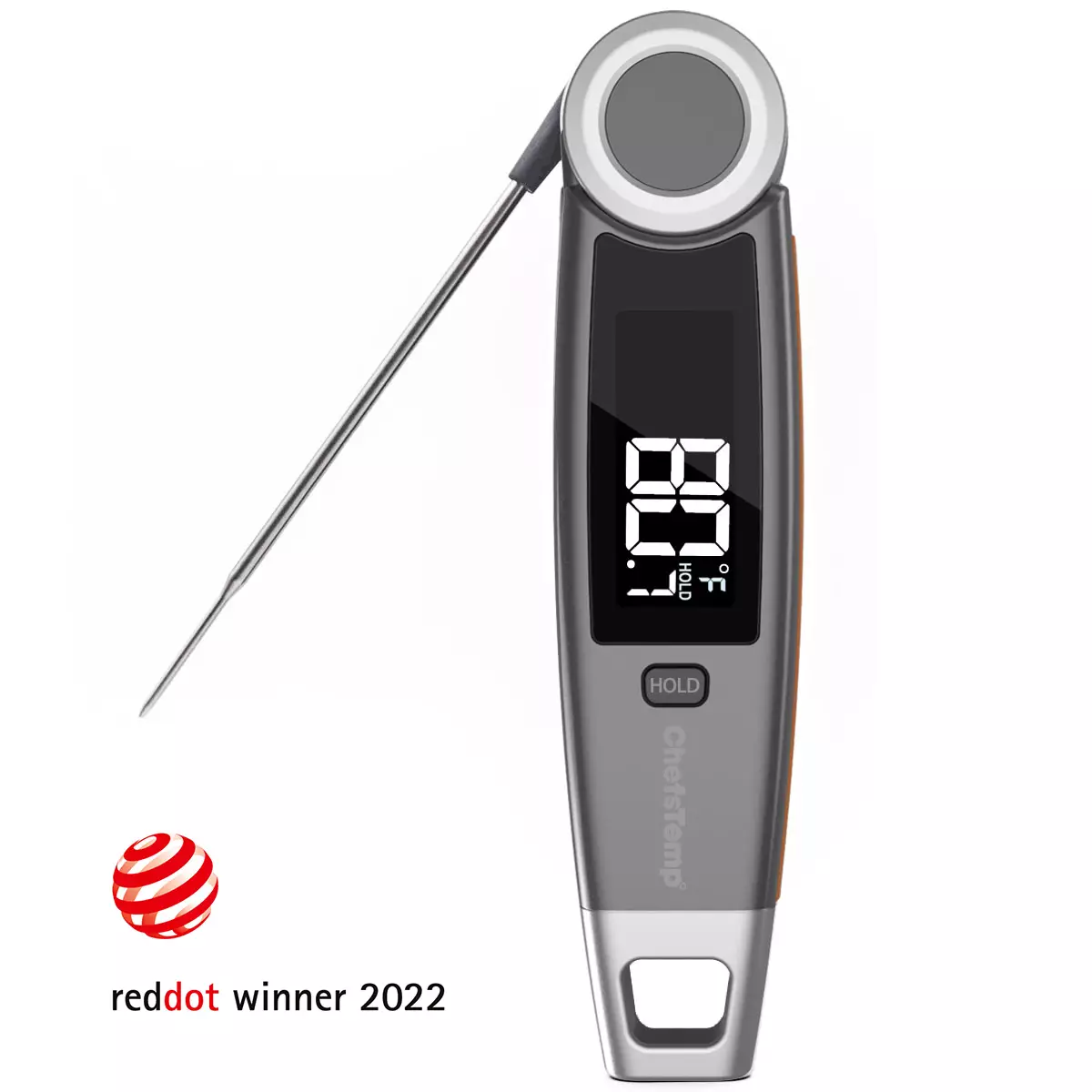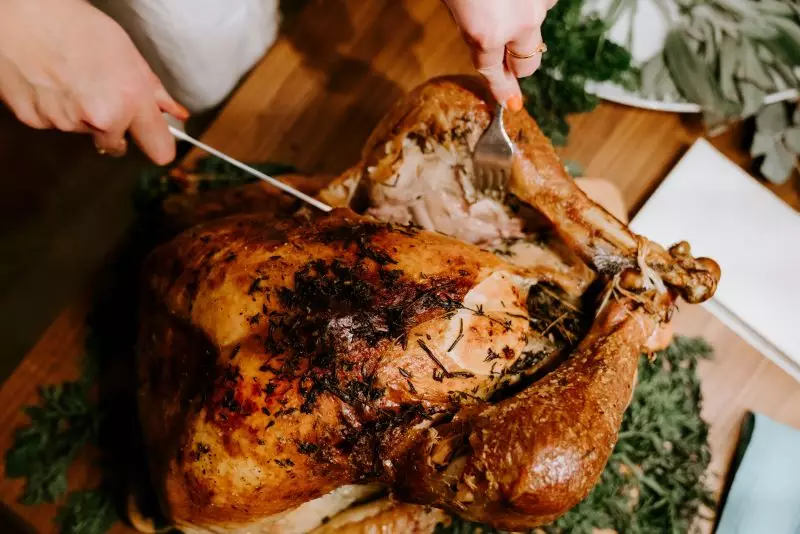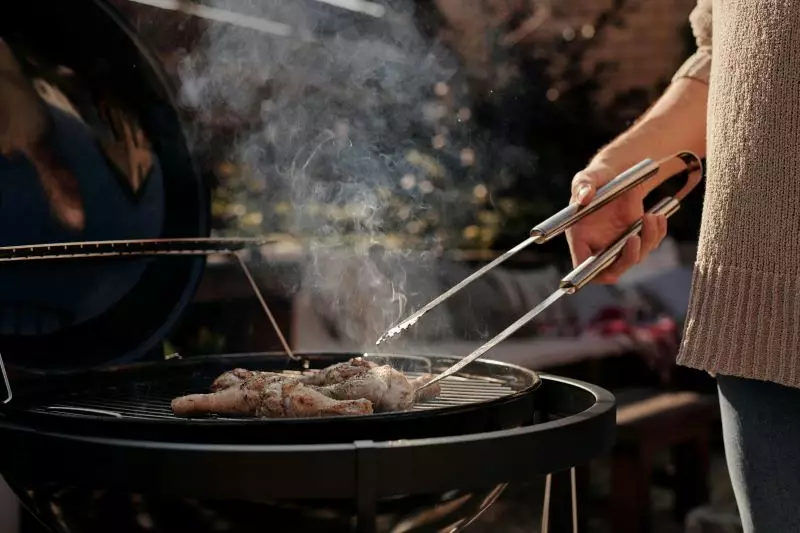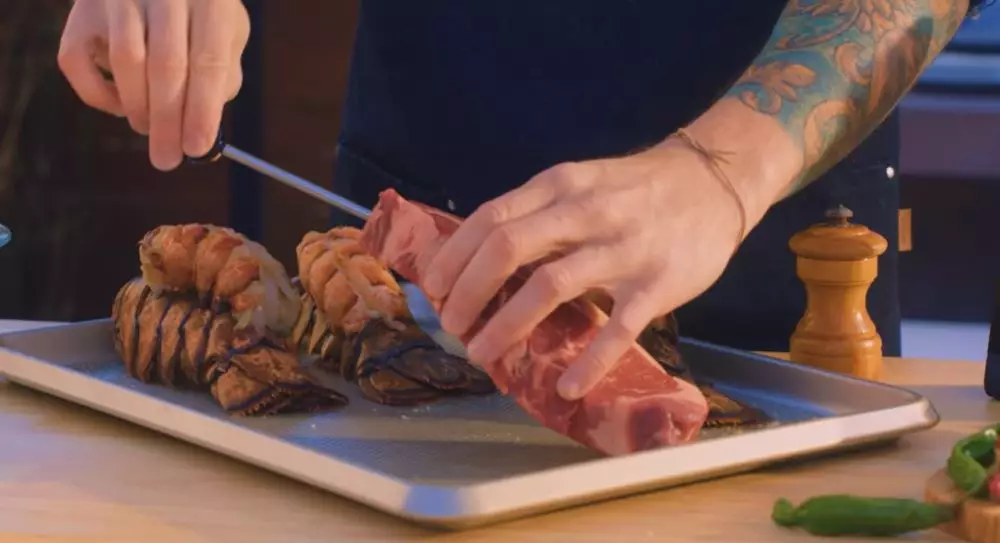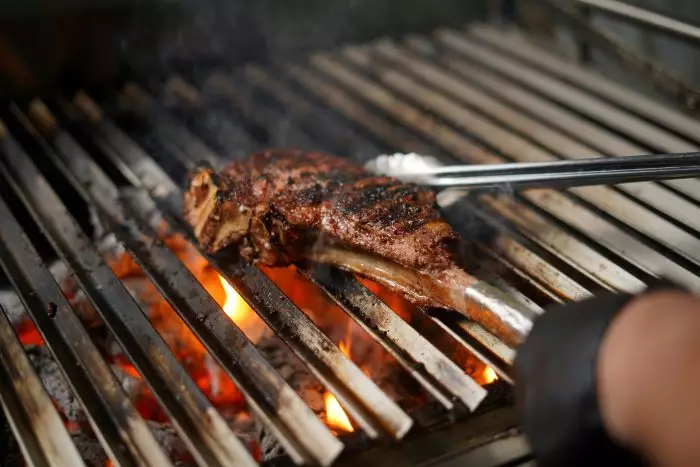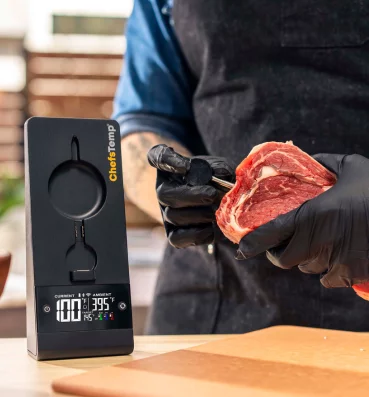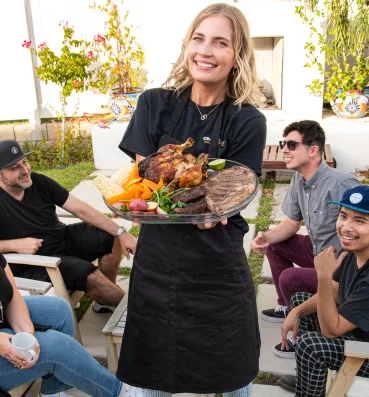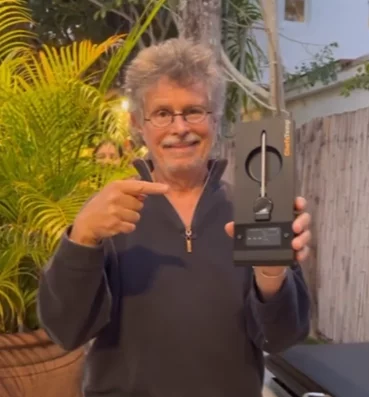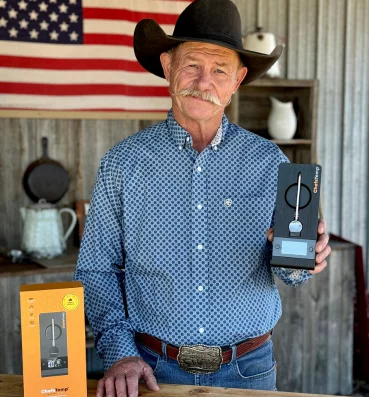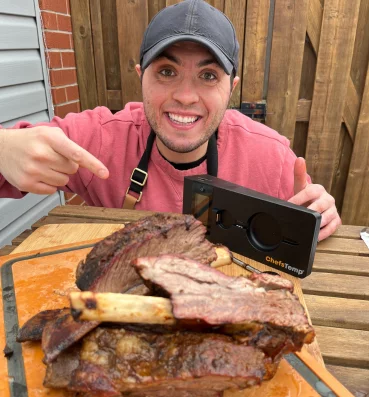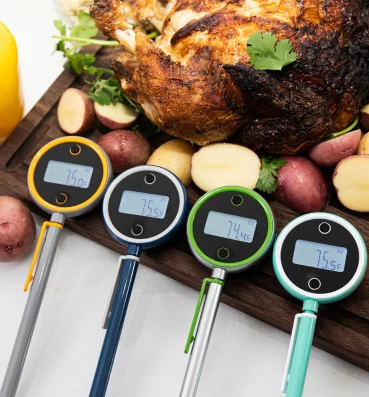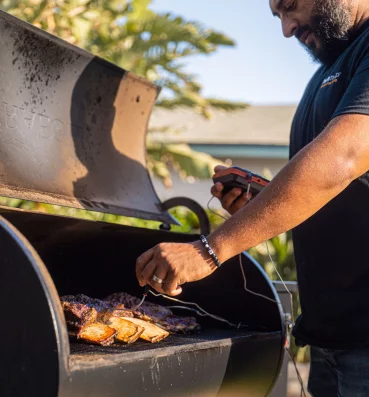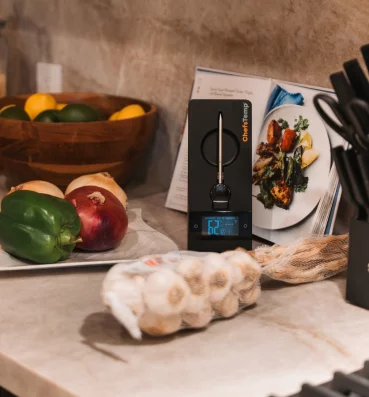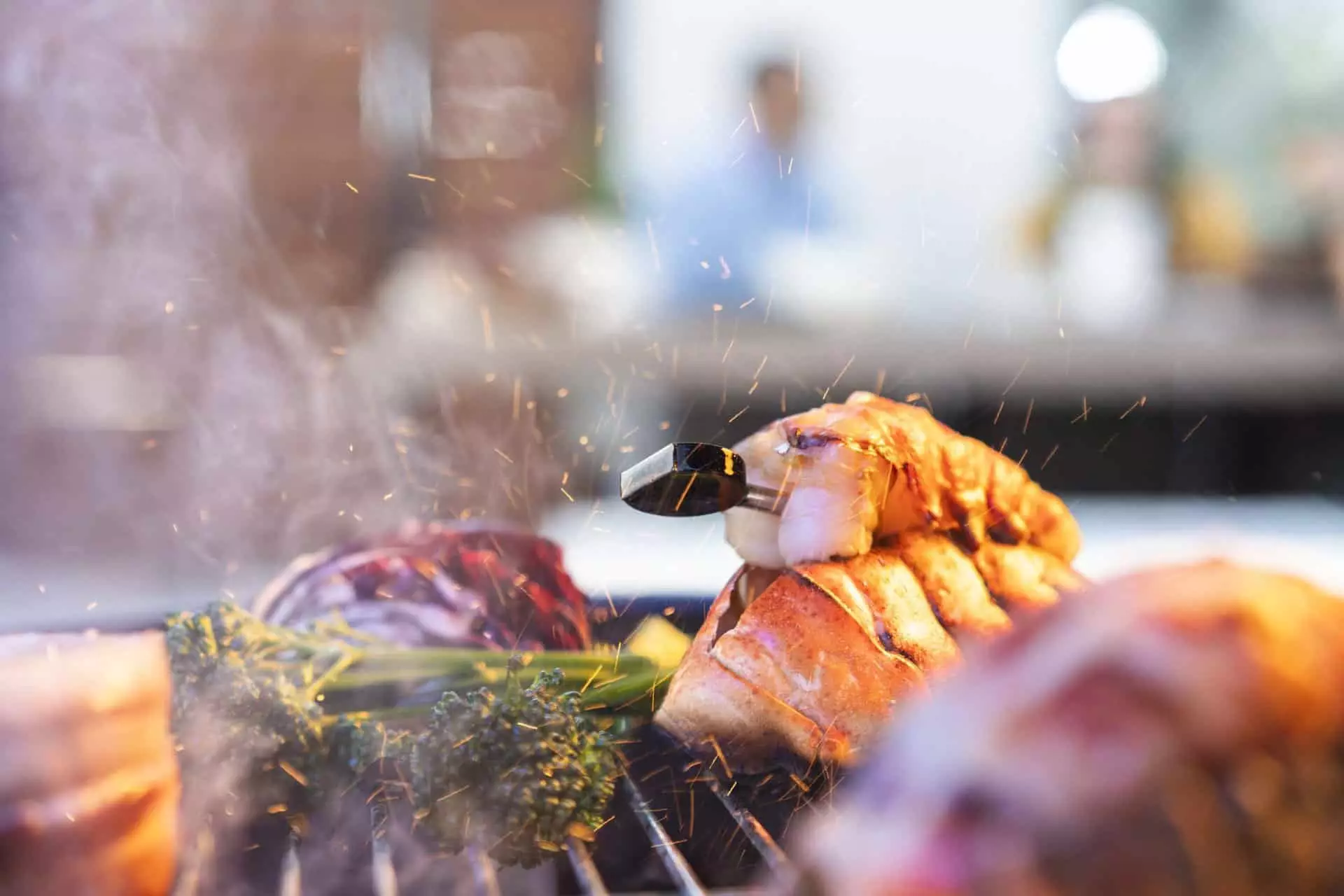
How to Measure Core Temperature When Cooking Sous-Vide?
The best meat thermometer serves as an indispensable tool when it comes to achieving precision and accuracy in measuring the core temperature of food during sous-vide cooking, ensuring a delightful culinary experience with each dish prepared.
Professional chefs and food aficionados alike have come to love sous-vide cooking because the technique reliably yields dishes that are juicy, soft, and tasty. Food is vacuum-sealed in a plastic bag and cooked using this exact cooking process by submerging it in a water bath at a carefully regulated temperature for a prolonged amount of time. Keeping an eye on the food’s core temperature is essential for achieving the best results, and utilizing an instant-read meat thermometer is a great method to make sure your sous-vide cooking is accurate.
Table of Contents
Understanding Sous-Vide Cooking
The idea of sous-vide, which means “under vacuum” in French, is to cook food uniformly by keeping the water at a constant temperature. Sous-vide cooking preserves the moisture and natural tastes of food by allowing for exact control over the cooking process, which is ideal for a variety of foods including sweets, steak, poultry, fish, and vegetables.
Importance of Temperature Control
In sous-vide cooking, reaching the right core temperature is crucial since it establishes the doneness of the meal. In contrast to conventional cooking techniques, which frequently rely on appearance to guide us, sous-vide depends on internal temperature to produce flawless results. For example, the outer hue of a sous-vide steak may remain the same even if the interior is cooked to a different level.
Using an Instant Read Meat Thermometer
One essential tool for correctly determining the core temperature during sous-vide cooking is an instant-read meat thermometer. Here’s how to utilize it successfully, step-by-step:
Step 1: Prepare Your Sous-Vide Setup
Make sure your sous-vide immersion circulator is set at the correct temperature as per your recipe before adding the food to the water bath. Throughout the cooking procedure, the temperature in the water bath should remain constant.
Step 2: Seal the Food and Begin Cooking
Make sure the food item is impermeable by sealing it in a vacuum-sealed bag. After the water bath has heated up, put the bag in and cook it for the prescribed amount of time.
Step 3: Monitor Cooking Time
For the recommended cooking time based on the type and thickness of the meal, consult a reliable sous-vide cooking guide or recipe.
Step 4: Check the Core Temperature
Plan to check the food’s core temperature around 15 to 30 minutes before the suggested cooking time is up. Take the bag out of the water bath very carefully.
Step 5: Using the Instant Read Meat Thermometer
Make sure the meat thermometer doesn’t touch the bag or any bones, if any, when it is inserted into the thickest portion of the food to reach the center. The thermometer will take a few seconds to stabilize and show the correct temperature.
Step 6: Interpret the Temperature
Consult a sous-vide temperature guide to find the ideal level of doneness for your particular dish. The ideal temperature for rare, medium-rare, medium, and so on varies depending on the food.
Step 7: Adjust Cooking, if Necessary
Put the meal back in the water bath to finish cooking if the core temperature hasn’t been reached. On the other hand, take into account lowering the sous-vide temperature or shortening the cooking time if the temperature is higher than the required level of doneness.
Step 8: Finish and Serve
Take the meal out of the water bath as soon as the center temperature is attained. Carefully open the bag, pat the food dry, and, just before serving, finish with a short sear or any additional spice.
What is the Perfect Temperature for Sous-Vide Cooking?
A lot relies on the kind of food you are cooking and the desired doneness when figuring out the perfect sous-vide temperature. The following broad criteria can be used to achieve various doneness levels with common sous-vide dishes:
Meat:
Steak, or rare beef: When aiming for a rare but tender steak, the ideal core temperature range is between 120°F and 129°F (49°C and 54°C).
Medium-Rare Beef:
For a bit more cooked but still pink and juicy steak, heat it to a temperature of 130°F to 134°F (54°C to 57°C).
Medium Beef:
Aim for a core temperature of 135°F to 144°F (57°C to 62°C) for a pink, but stiffer and less juicy mouthfeel.
Well-Done Beef:
Cook the meat to a core temperature of between 145°F and 155°F (63°C and 68°C) to achieve a more conventional well-done texture.
Poultry:
Chicken Breast: For a soft and moist outcome, keep the core temperature of the chicken breast between 140°F and 150°F (60°C and 65°C) to guarantee that it is cooked safely and fully.
Duck breast:
For a medium-rare texture and rich flavor, aim for a temperature range of 130°F to 135°F (54°C to 57°C).
Turkey Breast:
For a juicy and uniformly cooked turkey breast, aim for a temperature of 140°F to 150°F (60°C to 65°C), much like you would with chicken.
Fish:
Salmon: For a delicate, flaky texture and a little translucent look, cook salmon to a temperature of 110°F to 125°F (43°C to 52°C).
Halibut:
For a moist and tender filet, aim for a temperature range of 120°F to 130°F (49°C to 54°C).
Vegetables:
Root Vegetables: To soften and develop their flavors without losing nutrients, cook root vegetables like carrots or beets at temperatures between 183°F and 190°F (84°C and 88°C).
What Items Need to be Purchased to do Sous Vide Cooking?
To guarantee consistent, tasty results and exact temperature control, sous-vide cooking calls for specialized gear. The following are essentials to get you started on your sous-vide culinary adventure:
1. Immersion Circulator:
The foundation of any sous-vide setup is an immersion circulator. It keeps water heated and circulating in a container at a precise, consistent temperature for cooking. This gadget maintains the water’s temperature at the ideal level for your recipes by attaching to the side of a pot or other container.
2. Vacuum Sealer:
Before putting the food in the water bath, it is sealed in airtight bags using a vacuum sealer. By taking out the air from the bag, this apparatus guarantees appropriate heat transmission and guards against contamination or moisture loss when cooking.
3. Food-Grade Polythene Bags:
Specifically made sous-vide cooking bags are made to endure cooking at different temperatures. These bags can withstand the sous-vide cooking environment without risk and are often devoid of BPA.
4. Container or Pot:
A heat-resistant container or a large pot is needed to hold the water for the sous-vide cooking process. Make sure the container you select can hold the amount of food you want to cook and works with your immersion circulator.
5. Instant Read Meat Thermometer:
During and after sous-vide cooking, an instant-read meat thermometer is a vital tool for checking the internal temperature of meals. It gives you fast and precise temperature readings so you can be sure the food is cooked to perfection.
6. Smart Meat Thermometer:
This more sophisticated gadget can establish a Bluetooth or Wi-Fi connection with a smartphone or other devices. It enables real-time updates and notifications for the temperature of the food to be monitored remotely.
7. Meat Stick Thermometer:
Designed for continuous temperature monitoring, a meat stick thermometer is comparable to a smart thermometer. Certain versions come with cloud connectivity, which lets you monitor and manage the cooking process from a distance.
8. Optional Extras:
Weights or Clips: These maintain sous-vide bags in the water, guaranteeing uniform cooking.
Heatproof Surface or Mat:
Offers defense against the sous-vide setup’s heat on your counters or other surfaces.
Discover Precision Cooking with ChefsTemp’s Best Meat Thermometers!
Are you ready to elevate your culinary skills and achieve perfection in every dish? Look no further than ChefsTemp for the ultimate selection of top-notch meat thermometers!
Get Yours Now! Visit our website today and embark on a journey of precision cooking with our best-in-class meat thermometers!
Discover Other ChefsTemp Products
Discover more recipes and learn kitchen tricks by joining our cooking family on Facebook.
You may also like:
